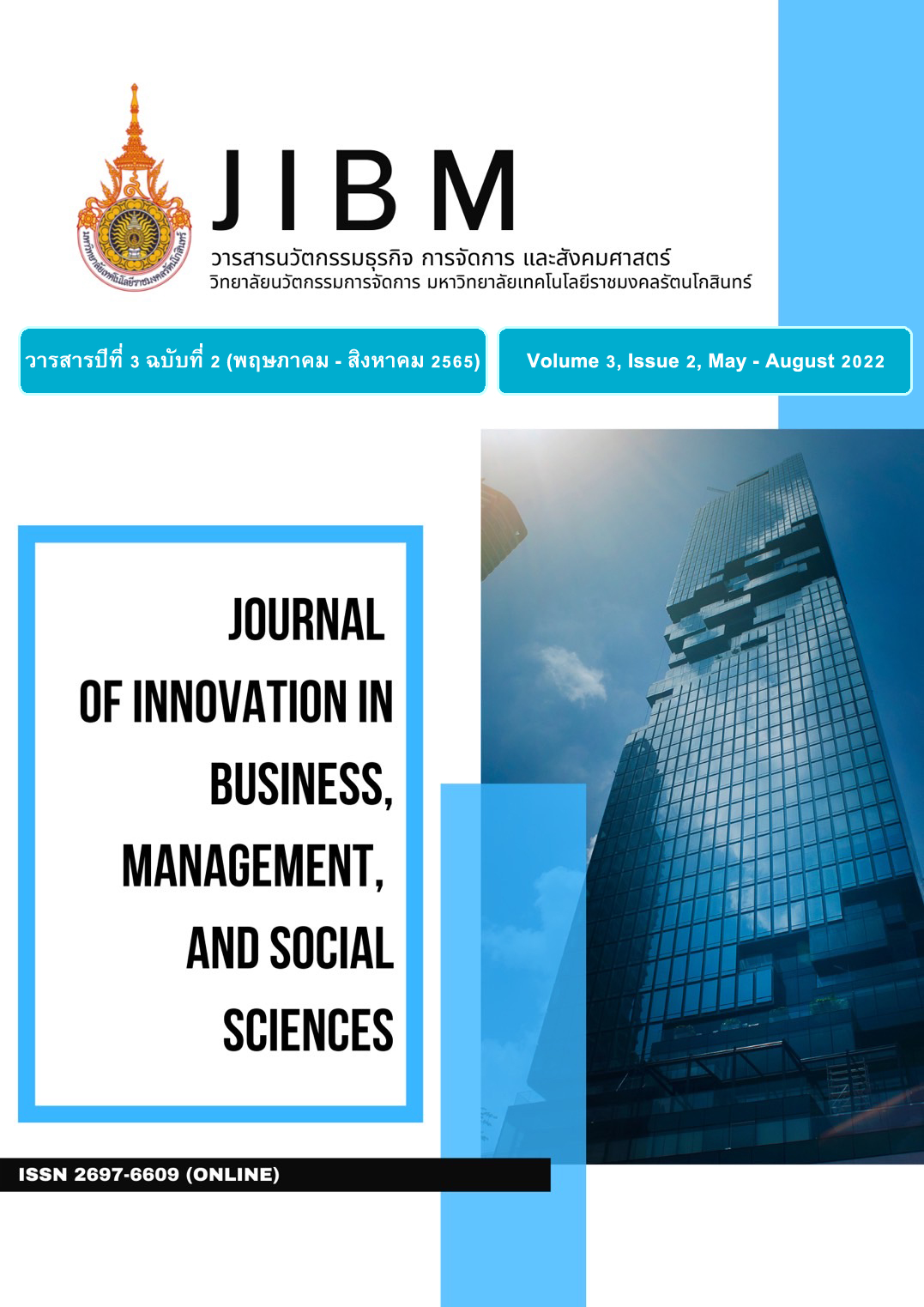Dividends, Investment and Cash Flow Uncertainty: Evidence from Thailand
คำสำคัญ:
Dividends, Investment, Cash flow uncertainty, External financing, Asymmetric information, Agency cost, Crisis, Non-crisisบทคัดย่อ
This study examines the relationship between dividends and investment with cash flow uncertainty and how firms manage cash flow uncertainty. The sample in the Stock Exchange of Thailand over the period from 2008-2020 based on a yearly basis by using piecewise and cubic regressions. The results demonstrate that dividends and investment are nonlinear relation with the different levels of cash flow uncertainty due to agency cost and asymmetric information. Other factors, including external cash, operating cash flow, growth opportunities, size, profitability, and financial leverage are investigated. However, no effect from the global financial crisis and the COVID-19 pandemic on dividends and investment decisions with cash flow uncertainty. When facing cash flow uncertainty, firms slightly reduce investment while keeping dividends. External finance is the major method to manage uncertain cash flow.
เอกสารอ้างอิง
Chay, J. B., & Suh, J. (2009). Payout policy and cash-flow uncertainty. Journal of Financial Economics, 93, 88–107. https://doi.org/10.1016/j.jfineco.2008.12.001
Daniel, N. D., Denis, D. J., & Naveen, L. (2008). Dividends, investment, and financial flexibility. Working paper. http://dx.doi.org/10.2139/ssrn.1107250
DeAngelo, H., & DeAngelo, L. (2006). Capital structure, payout policy and financial flexibility. Working paper. University of Southern California. http://dx.doi.org/10.2139/ssrn.916093
Deng, L., Li, S., Liao, M., & Wu, W. (2013). Dividends, investment and cash flow uncertainty: Evidence from China. International Review of Economics and Finance, 27, 112-124.
https://doi.org/10.1016/j.iref.2012.09.005
Dickinson, V. (2011). Cash Flow Patterns as a Proxy for Firm Life Cycle. The Accounting Review, 86, 1969-1994. https://ssrn.com/abstract=755804
Dhrymes, J., & Kurz, M. (1967). Investment, dividend and external finance behavior of firms. In R. Ferber (Ed.), Determinants of investment behavior, New York: National Bureau of Economic Research, 427–486. https://ideas.repec.org/h/nbr/nberch/1243.html
Fazzari, M., Hubbard, G., & Petersen, C. (1988). Financial constraints and corporate investment. Brookings Papers on Economic Activity, 1, 141-195. https://doi.org/10.3386/W2387
Fama, E. F. (1974). The empirical relationships between the dividend and investment decisions of firms. American Economic Review, 64, 304–318. https://www.jstor.org/stable/1808884
Jensen, M., & Meckling, W. (1976). Theory of the Firm’: Managerial behavior, agency cost and ownership structure. Journal of Financial Economics, 305-360. https://www.sfu.ca/~wainwrig/Econ400/jensen-meckling.pdf
Kato, H. K., Loewenstein, U., & Tsay, W. (2002). Dividend policy, cash flow, and investment in Japan, Pacific-Basin Finance Journal, 10, 443-473. https://doi.org/10.1016/S0927-538X(02)00068-9
Lintner, J. (1956). Distribution of income of corporations among dividends, retained earnings, and taxes. American Economic Review, 5, 97–113. https://www.jstor.org/stable/1910664
Miller, M. H., & Modigliani, F. (1961). Dividend policy, growth, and the valuation of shares. Journal of Business, 34, 411–433. https://www.jstor.org/stable/2351143
Minton, B. A., & Schrand, C. (1999). The impact of cash flow volatility on discretionary investment and the costs of debt and equity financing. Journal of Financial Economics, 54, 423–460.
https://doi.org/10.1016/S0304-405X(99)00042-2
Sun, Z., & Wang, Y. (2015). Corporate precautionary savings: Evidence from the recent financial crisis. In Quarterly Review of Economics and Finance, Volume 56, 175-186. https://doi.org/10.1016/j.qref.2014.09.006
Thanatawee, Y. (2011), Life-Cycle Theory and Free Cash Flow Hypothesis: Evidence from Dividend Policy in Thailand. International Journal of Financial Research, 2(2), 52-60.http://www.sciedu.ca/journal/index.php/ijfr/article/view/225



